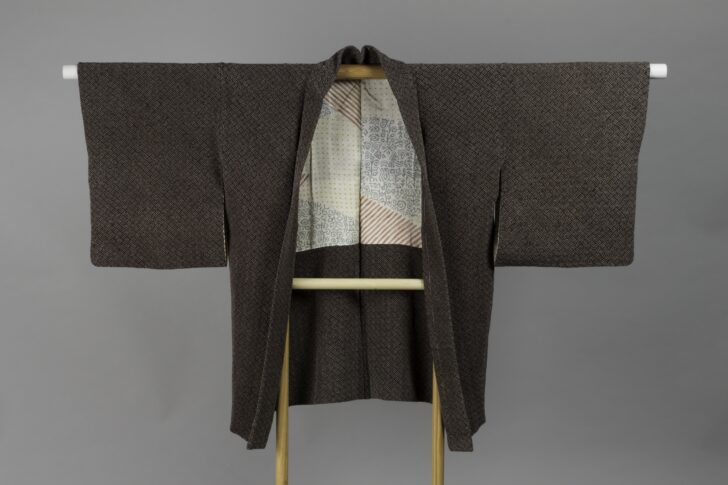Haori
Japanese

Description
Subject Matter:
Yosegire motifs are a patchwork pattern of many simplified motifs.
Chirimen refers to the unique wrinkled texture, also called crepe texture, created by a specific weaving technique. This texture is often used with traditional Japanese fabrics, often silk, wool, or synthetic fiber. Rinzu is a pre-made white, blank thin silk fabric that contains textured interwoven designs onto which dye is applied for patterning and design.
Shibori is labor intensive dying technique in which hundreds of hours are spent tying miniscule sections of the fabric before immersing it in dye, leaving the tied parts white. Shibori textiles are very expensive due to the time and skills required to produce them.
The Haori is a traditional Japanese hip or thigh-length jacket with elongated sleeves that is worn over the kimono. The Haori typically includes an interior lining with a design that is otherwise hidden from view when worn.The haori was originally part of a man’s formal attire, but in the nineteenth century, female entertainers in Edo (modern Tokyo) adopted it as a cloak for outdoor wear in mild weather. By the end of the century, married women of the upper class adopted black crepe silk haori with family crests for formal, public occasions. For much of the twentieth century, the haori has been the standard outerwear for a woman who dresses in a kimono outside the home.
Physical Description:
Dark brown and gray Chirimen haori with shibori dyed latticework patterning with a white rinzu inner lining with dyed green, red and blue yosegire motifs
Usage Rights:
If you are interested in using an image for a publication, please visit https://umma.umich.edu/request-image/ for more information and to fill out the online Image Rights and Reproductions Request Form.